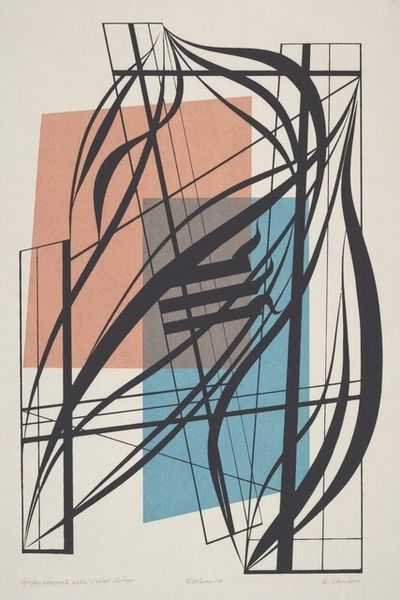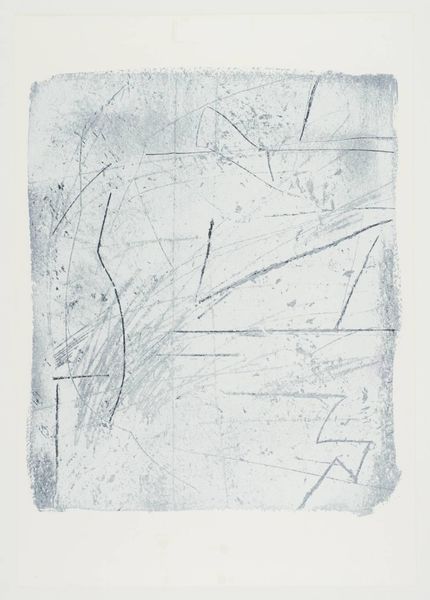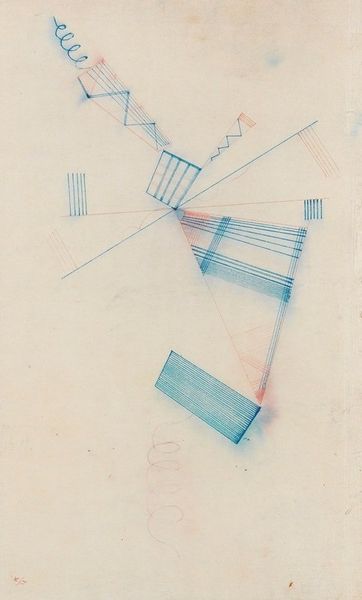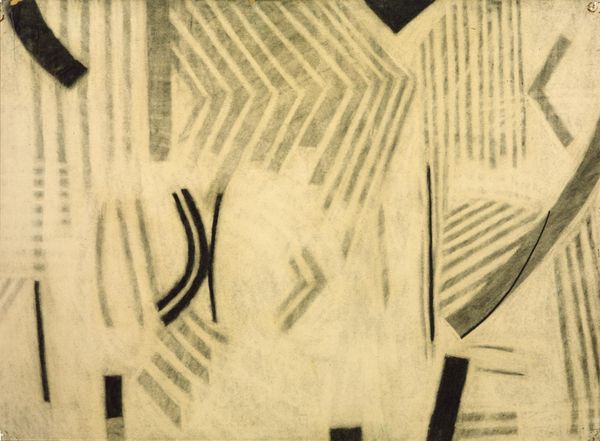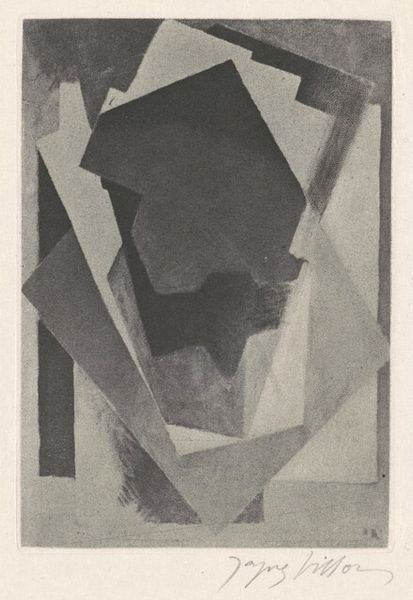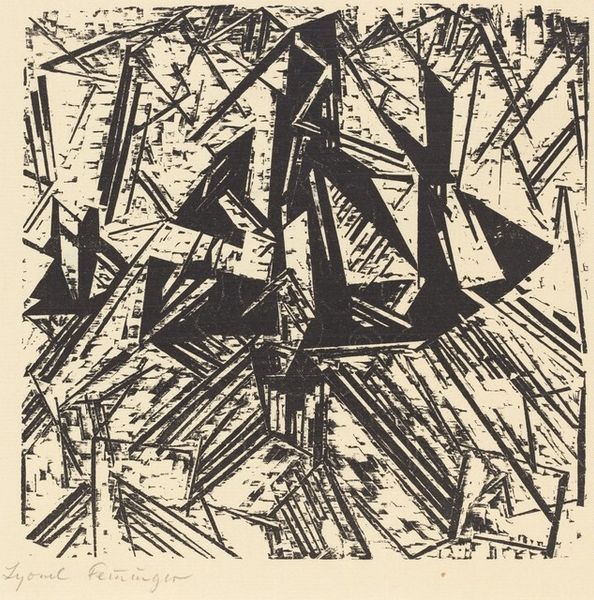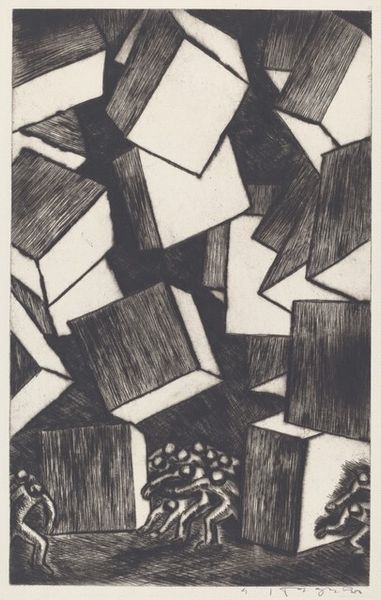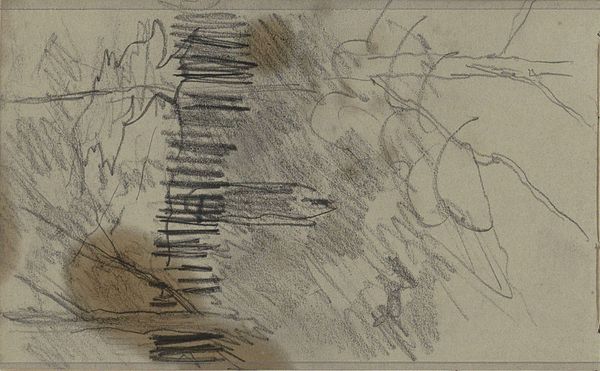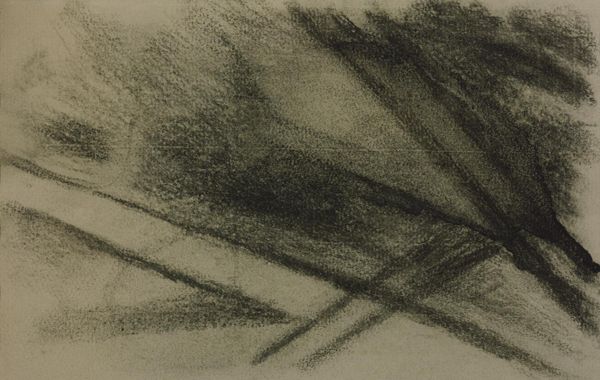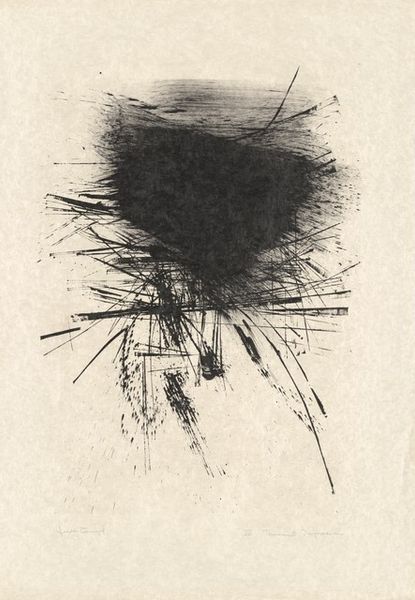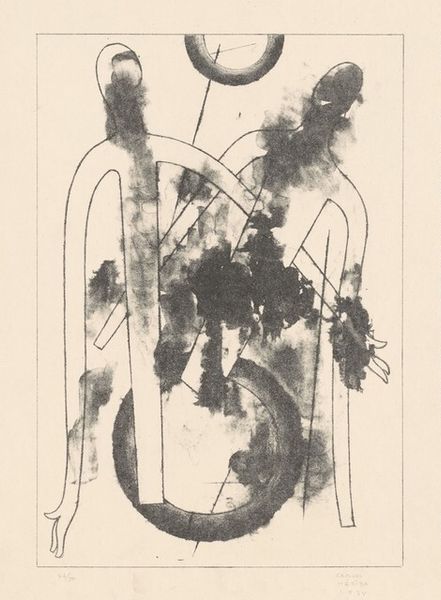
drawing, graphite
#
drawing
#
pencil sketch
#
geometric
#
abstraction
#
line
#
graphite
#
modernism
Copyright: Jean-Paul Jerome,Fair Use
Curator: We’re looking at “Monde nostalgique #3” from 1980, a drawing in graphite and pencil by Jean-Paul Jerome. It's a study in geometric abstraction, composed mainly of intersecting lines and shapes. What do you make of it at first glance? Editor: It’s evocative! All those graphite lines shimmering on the page give the impression of something both solid and fragile. Like the blueprint of a shattered cathedral or the memory of a grand, yet forgotten machine. Curator: That's interesting, thinking about blueprints. Given the artist’s commitment to abstraction, the drawing represents a decisive break from tradition—though perhaps, too, a negotiation with its strictures. The 'nostalgique' of the title also resonates strongly with that theme. Editor: Well, nostalgia for what, I wonder? I look at all that graphite work, the pressure on the page, the gradations of shadow, and I keep thinking about the labor involved. Jerome might have been reflecting on the loss of industrial craft in a digital era, the move away from direct interaction with material and towards digital interfaces. Curator: Perhaps. And yet there is still something quite dreamy about it all; something transcendent. The abstract forms create their own universe. They gesture toward the infinite—like a Zen koan rendered in graphite. There’s a feeling of reaching towards something…unachievable. It reminds me of Italo Calvino’s *Invisible Cities*. Editor: Absolutely. It really highlights that inherent tension between representation and reality, too. Pencil, paper, graphite – such elemental tools, deployed in such a sophisticated way, and mass produced at low cost, right? It kind of throws the romantic concept of the lone genius into question. Curator: Well, yes and no, I think. Even with readily available materials, it’s how you combine and execute that matters, isn’t it? There's no question that Jerome’s distinct aesthetic, the tension in his linework—that’s unique, and uniquely powerful. He made a conscious choice about his materials, right? Editor: True. Seeing all these carefully orchestrated elements definitely moves the needle in surprising directions! The interplay between line and form gives it a sculptural feel. It’s like looking at something geological being slowly, meticulously revealed.
Comments
No comments
Be the first to comment and join the conversation on the ultimate creative platform.
